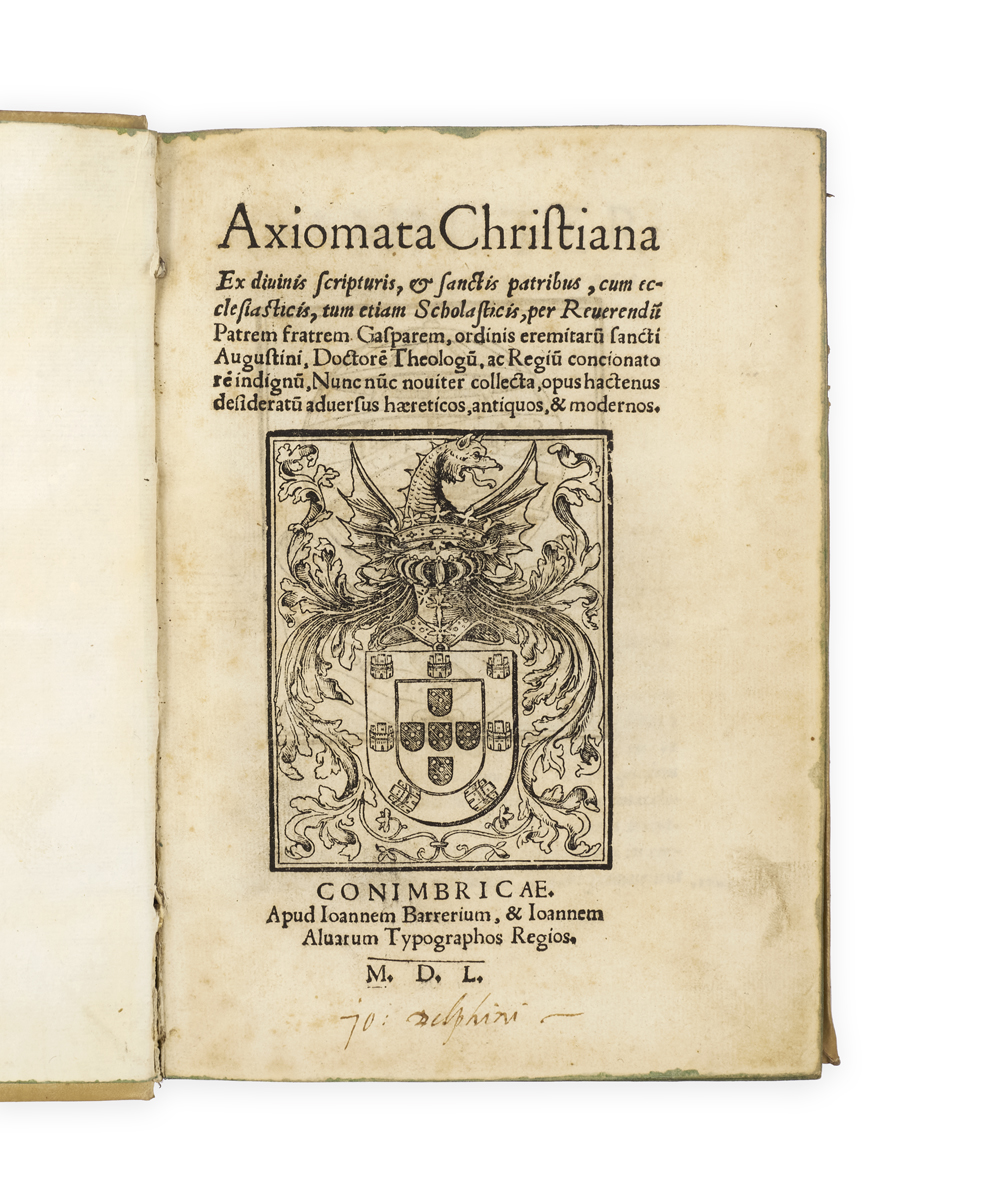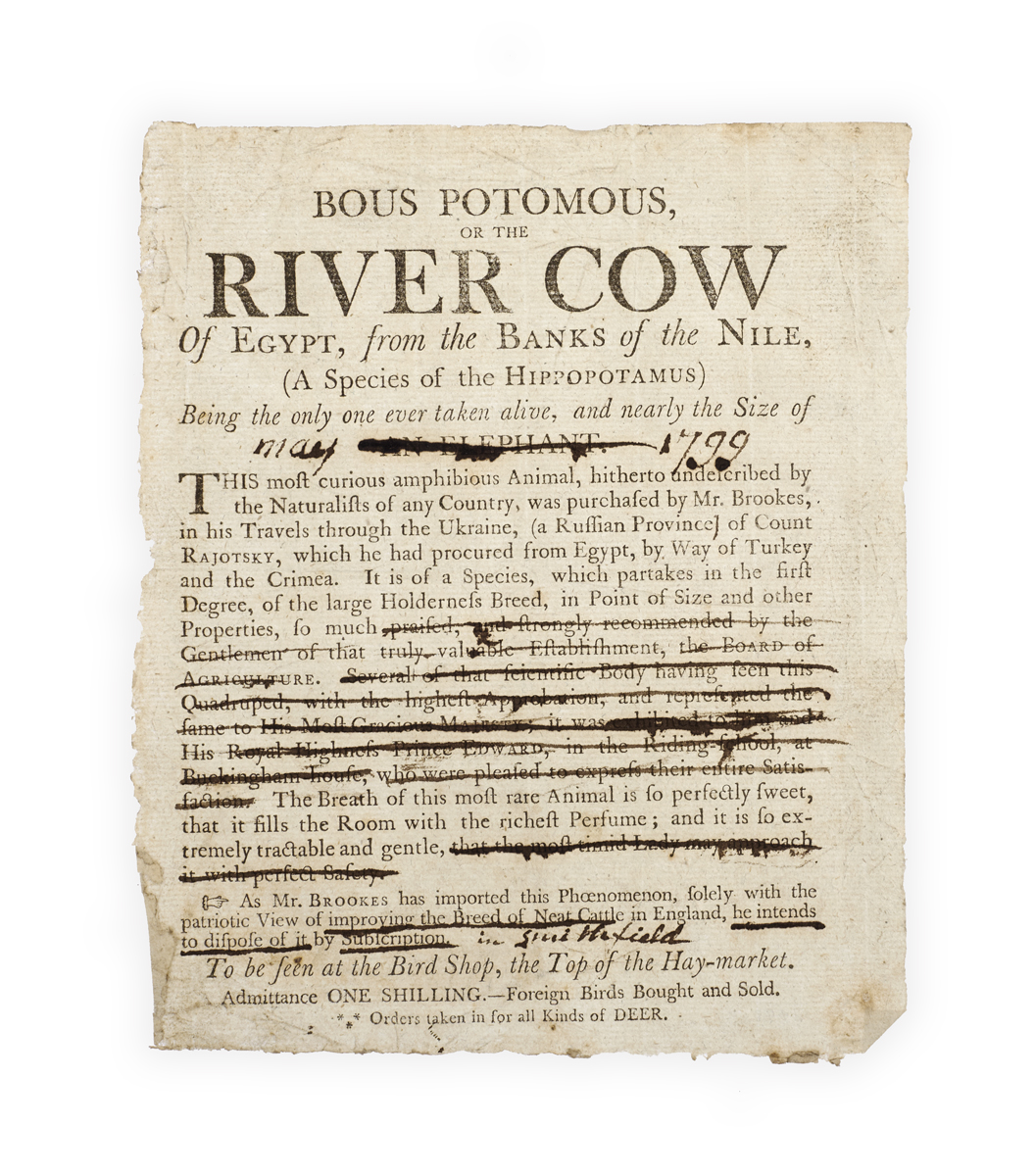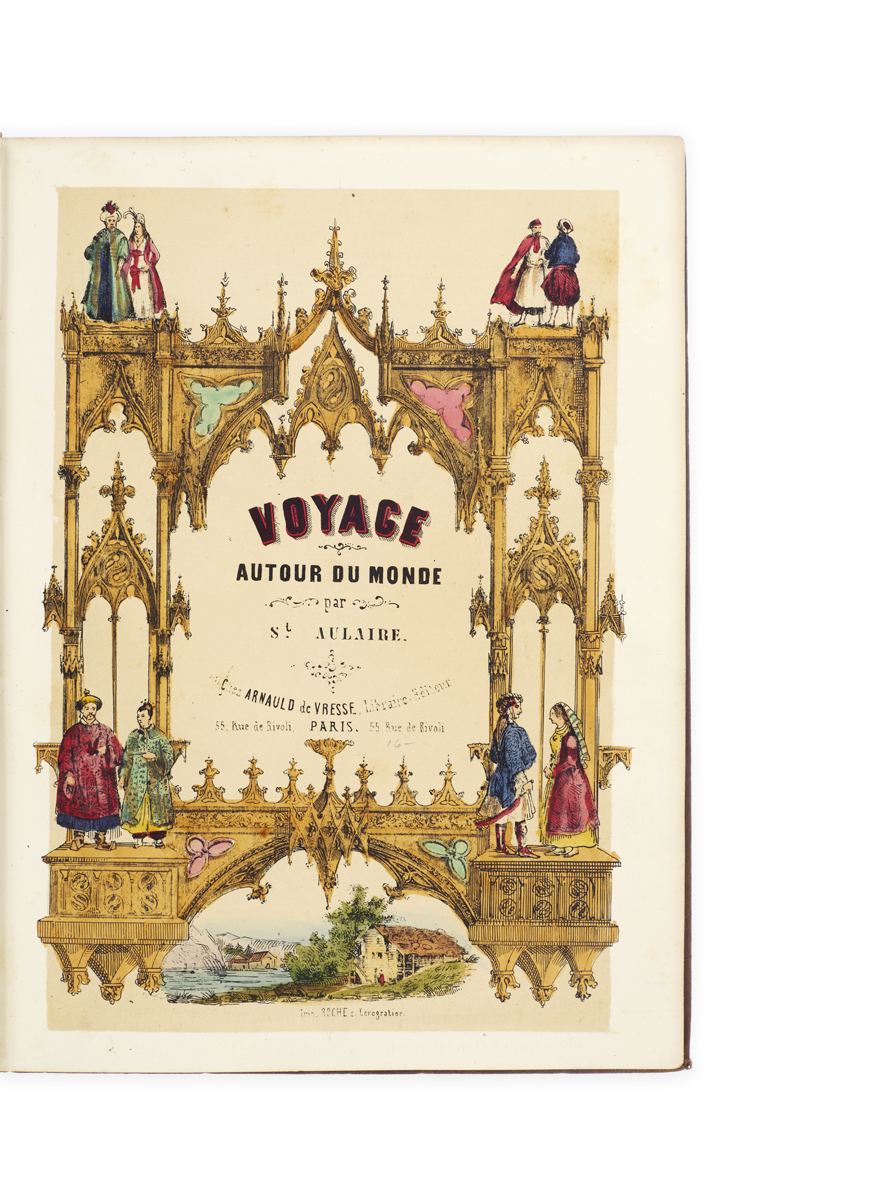
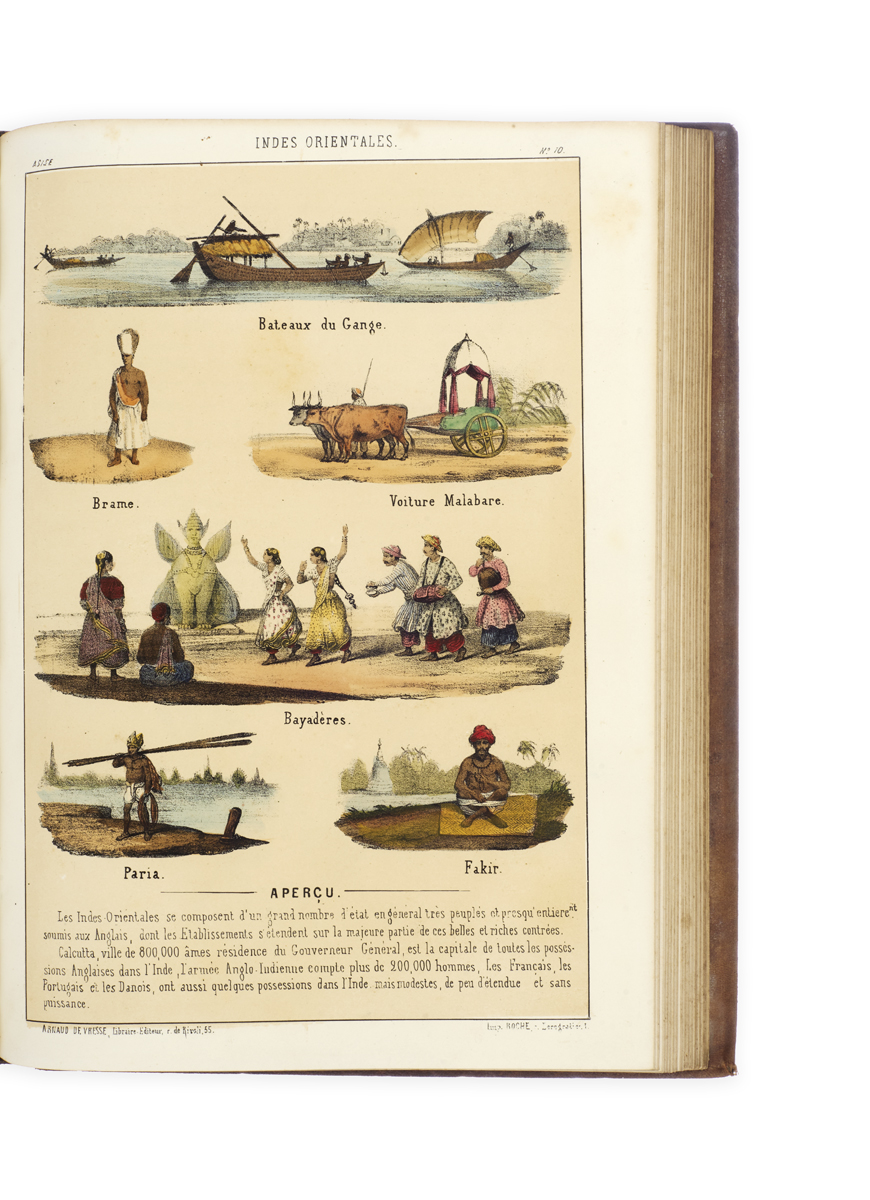
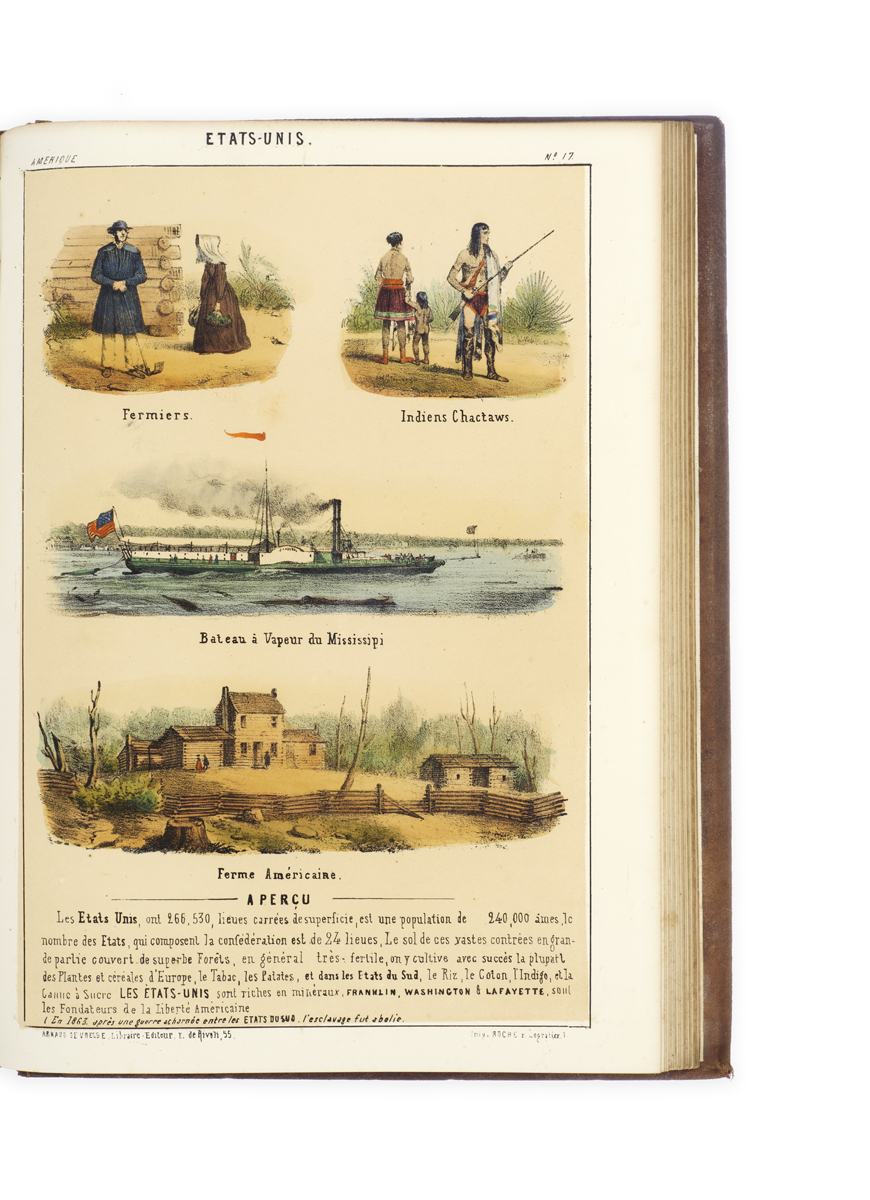
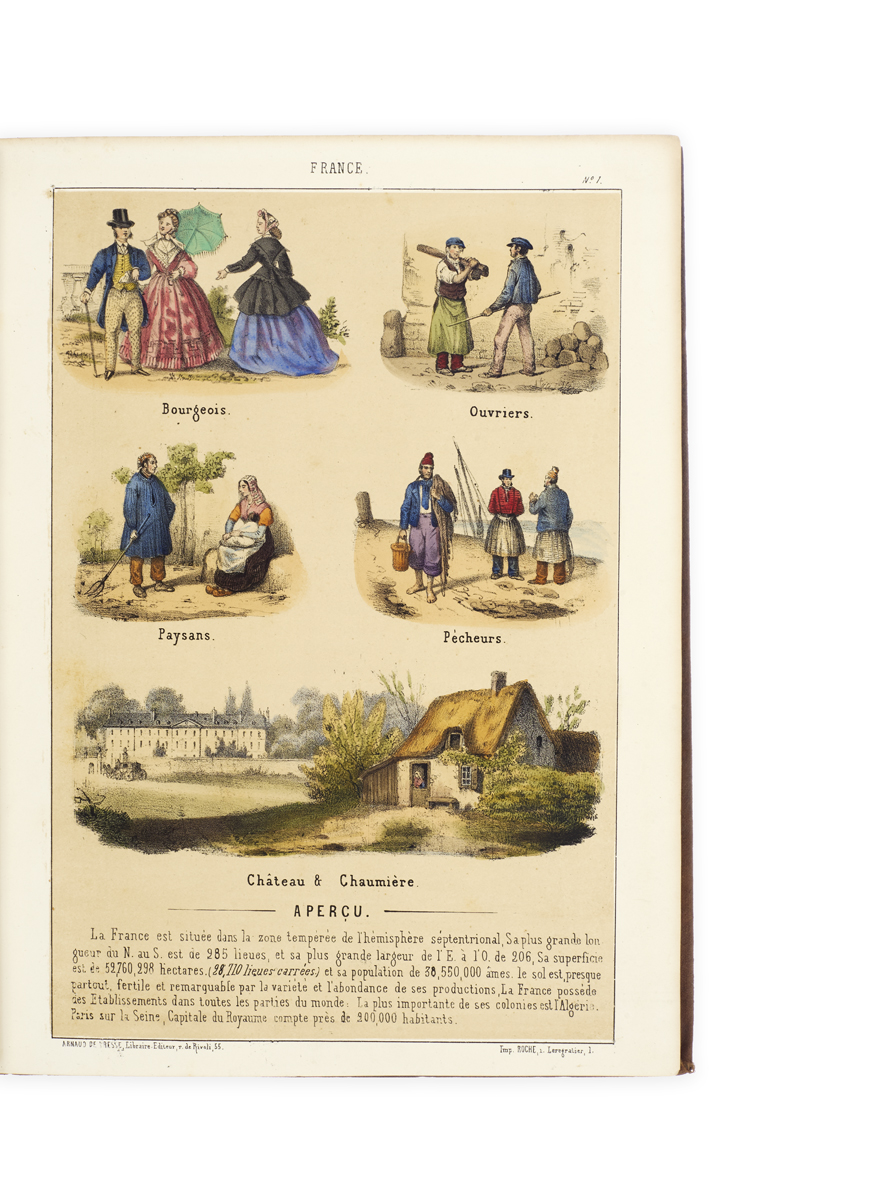
AROUND THE WORLD IN TWENTY-FOUR HAND-COLOURED PLATES
SAINT AULAIRE, Achille.
Voyage autour du monde par St. Aulaire.
[Clichy, Maurice Loignon for] Paris, Arnauld de Vresse, [c. 1864].
4to, pp. 54, [2 (table of contents)], with hand-coloured lithographic title and 24 hand-coloured lithographic plates by Roche; some woodcut vignettes within text; closed marginal tear to pp. 41-42 and to blank leaf facing Japan plate (without loss), some foxing particularly at end, blue ink stain to blank leaf facing title (no offsetting); overall very good in brown morocco-backed boards, pebble-grained brown cloth sides with blind-blocked panels, spine gilt in compartments and lettered directly in gilt, white watered silk endleaves; some wear to endcaps and corners, light staining to fore-edges of covers.
A hand-coloured copy of this scarce and charming juvenile guide to twenty-four countries across the globe. The plates are adapted from those first published in Paris by Aubert circa 1845 under the title Récréations instructives: voyage pittoresque à travers le monde (Gumuchian 5037).
They are here brought up to date with information referencing events between 1862 and 1864, and are interleaved with fifty-six pages of accompanying letterpress text, not present in Aubert’s edition.
Each plate comprises several scenes depicting local costumes, customs, and scenery, with a textual summary at the foot. The countries and regions covered are France, England, Russia, Spain, Italy, Greece, Persia, Barbary, Australia, the Canary Islands, India, Indonesia, West Africa, Argentina, Switzerland, Turkey, Brazil, the United States, China, Japan, Mexico, Peru, Egypt, and New Zealand. Among the charming details are a French château and thatched cottage juxtaposed, English boxers squaring off, the Tower of London, ancient Persian sculptures, Aboriginal Australian body art, Hindu dancers, the Turkish Sultan, a Mississippi steamer, a Mexican temple, an Egyptian minaret, and a New Zealand canoe.
A footnote to the US plate mentions the abolition of slavery in 1863, while the Italian plate refers to hostilities between France and Italy in 1864. The accompanying text summarises each country’s population, geography, climate, industry and commerce, language and culture, government, religion, and national character, beginning, of course, with France: ‘this beautiful land can rival the greatest nations of antiquity and modern times.’
No copies traced in the UK. OCLC records two copies only in the US (UCLA, Yale).
